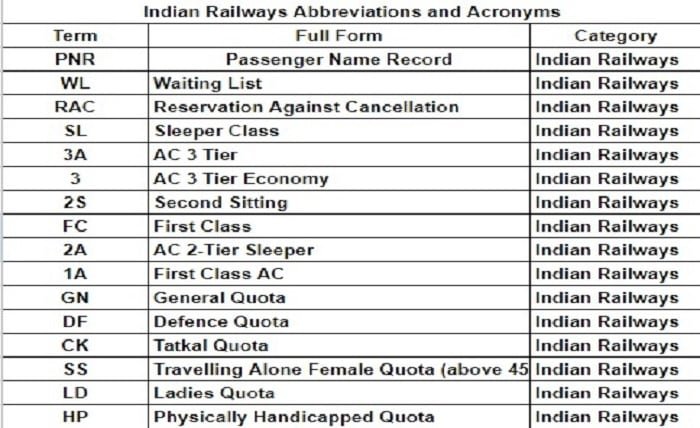How to Check PNR Status in Indian Railways?

Introduction
Staying informed about your train reservation is crucial for a smooth trip in today’s fast-paced travel world. Indian Railways offers a convenient SMS service for checking PNR status. This makes it easier for passengers who do not have internet access to remain informed. This blog will walk you through the SMS procedure, explain ticket statuses and the different types of waitlist tickets.
Understanding Your Ticket Status
Your ticket has two numbers. These numbers indicate the order in which you entered the waitlist and the current position of your ticket. Here is an illustration:
You can do your Train Ticket Booking online. The e-ticket will include the date, time, and class of the train (AC, Second Class, Third Class, etc.). For example, if you purchase a ticket showing WL5/WL2, you may have joined the waitlist in position 5, but when you actually paid for and bought the ticket, you moved to position 2. This could be due to a cancellation or someone not finalizing their booking.
The first number (in this case, WL5) will remain the same. The second number will continue to decrease until you receive a confirmed ticket. Here is what your reservation status might look like in this order:
- WL 5/WL 2
- WL 5/WL 1
- WL 5/RAC 3
- WL 5/RAC 2
- WL 5/RAC 1
- WL 5/CNF
Use SMS to Check the Status of Your Reservation
To improve customer satisfaction, the railway has launched SMS services for PNR inquiries. It is a convenient and useful way for passengers who do not have internet access. The most popular service is:
- Service 139 SMS:
IRCTC initially launched the 139 SMS service. To get PNR status via SMS on your mobile, send the following message to 139: - PNR <Your PNR Number>
(Example: PNR 1023456789)
You can also check the status of your PNR using other methods
Other methods can be used to check the status of your PNR, besides SMS:
1. Online Check via IRCTC Website:
On the official IRCTC website, passengers can enter their PNR number in the designated sections to receive real-time updates on their tickets.
2. Mobile Apps:
The IRCTC mobile app provides a simple interface for checking the status of PNRs. Enter your PNR in the app to receive updates immediately.
3. Contact the Railway Inquiry Number:
You can receive an automated update on your PNR status by calling the railway inquiry number (139).
4. Apps and Websites from Third Parties:Entering your PNR number on any of the websites or applications that are dedicated to train service will allow you to check your PNR status.
5. The Railway Station:
At the station, passengers can check their PNR status using digital displays or inquiry counters.
PNR Status and Seat Availability
This section explains the importance of a ticket’s status in train travel:
- RAC (Reservation Against Cancellation):
A passenger can travel, and two people share the same berth. A full berth will be allocated to the RAC passenger if a confirmed passenger fails to board the train. - CNF (Confirmed):
The seat for the passenger has been confirmed. Seats will be assigned after charting. - WL (Waitlist):
A passenger holding a Waitlist ticket will be placed on the waiting list and is not permitted to board the train. The passenger can cancel a waitlist ticket 30 minutes prior to the train’s departure. A WL ticket is automatically cancellled if it’s not confirmed. - No Room (NR):
An NR ticket means that there is no room available, and no further reservations can be made. - NOSB (No Seat Berth):
Children under 12 who pay child fares do not receive seats. The PNR status is NOSB, which stands for No Seat Berth. - Released (REL):
REL is the abbreviation for Released. - WEBCAN:
This indicates a counter ticket. If a passenger’s ticket is cancellled via the internet but the refund hasn’t been collected. - WEBCANRF:
If a passenger’s ticket is cancellled via the internet and the refund is collected, the status will show WEBCANRF.
How Long Are PNR Numbers Valid?
Normally, the Passenger Name Record (PNR) becomes meaningless once the journey is completed. The PNR details are not usually made public after the trip is completed due to privacy and security concerns. However, the PNR number lasts a minimum of 9 months. The TDR can be filed for up to 9 months. After that, the TDR is removed from the database.
Indian Railways Ticket Types

- e-Ticket:
Tickets, or electronic tickets, can only be booked on the IRCTC website. You can print your ticket out and present it to the TTE along with the relevant passenger ID. - i-Ticket:
Tickets purchased at railway reservation counters are of type I-Ticket. You can book it on the IRCTC site and have it delivered to your door by courier.
Types of Waitlist Tickets & Their Confirmation Priority
Railways allocate different types of waiting list quotas based on predefined rules when tickets are not confirmed:
- GNWL (General Waitlist):
The likelihood of a GNWL confirmation is given the highest priority. If you start your journey near the train’s source station and end it near the train’s destination station, you may be eligible for a GNWL quota. - CKWL (Tatkal Waiting List):
When tickets are not reserved, you will receive CKWL status if you book your ticket within the tatkal quota. GNWL tickets are confirmed first, followed by CKWL. Therefore, CKWL tickets are very unlikely to be confirmed. - TQWL (Tatkal Waitlist):
The status of a passenger who has made a tatkal reservation and been placed on the waiting list. This ticket has the lowest chance of being confirmed. - PQWL (Pooled Quota Waitlist):
Passengers travelling between intermediate stations have a separate waiting list from the general one. - RLWL (Remote Location Waitlist):
A Remote Location Waitlist has a high confirmation chance. The smaller stations have a separate quota, and the waiting seats at these intermediate stations receive RLWL status. - RSWL (Road-Side Waitlist):
RSWL (Road-Side Waitlist) in Indian Railways applies to tickets booked from smaller stations without dedicated quotas. It has a lower confirmation chance than other waiting lists, as fewer seats are available. RSWL tickets are often the last to be confirmed, depending on cancellations from other quotas.
Indian Railways also has other waiting list quotas for long-distance trains, such as RLWL (Remote Location Waiting List), RQWL (Request Waiting List), PQWL (Pooled Quota Waiting List), RLGN (Remote Location General Waiting List), and RSWL (Roadside Station Waiting List). These types of tickets have very low chances of confirmation.
Conclusion
Checking PNR status is essential to an enjoyable journey on Indian Railways, whether using SMS services or online platforms. Staying informed on ticket status helps manage travel plans effectively while understanding various waitlists such as RAC to GNWL gives greater clarity into chances of securing confirmed seats – all helping make for an easy travel experience with Indian railways!




